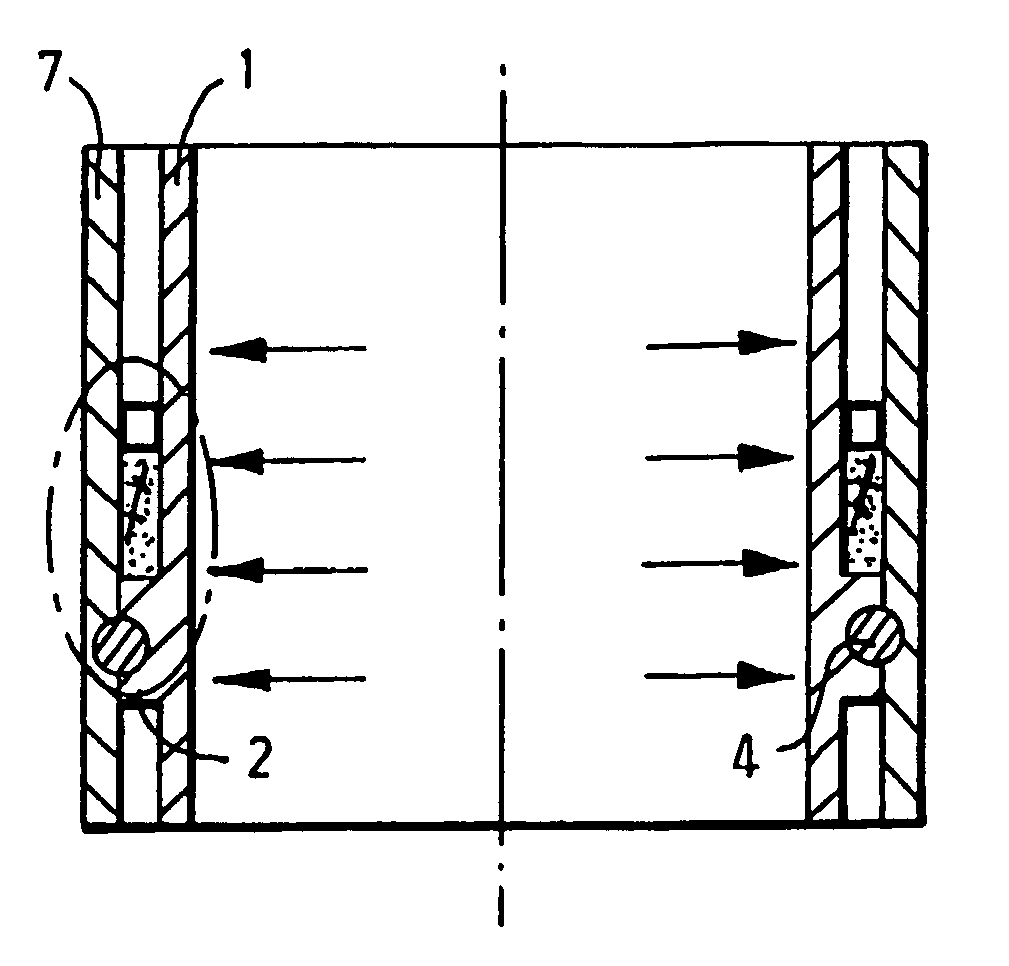In-situ casting of well equipment
a technology of insitu casting and well equipment, which is applied in the direction of insulation, sealing/packing, borehole/well accessories, etc., can solve the problems of cement or other solidifying substance shrinkage during solidification or curing
- Summary
- Abstract
- Description
- Claims
- Application Information
AI Technical Summary
Benefits of technology
Problems solved by technology
Method used
Image
Examples
Embodiment Construction
[0061]1) An experiment was carried out to verify that the expansion behaviour of Bismuth alloys is not limited to atmospheric conditions. A Bi58Sn42 (Bismuth-Tin) alloy was solidified in a pressurized chamber at 400 bar pressure. The pressurized chamber formed part of an experimental device which is described in SPE paper 64762 (“Improved Experimental Characterization of Cement / Rubber Zonal Isolation Materials”, authors M G Bosma, E K Cornelissen and A Schwing). The experiment indicated that under the test conditions the alloy expanded by 1.41% by volume.[0062]2) Another sample of a Bi58Sn42 alloy was cast into a dirty (i.e. coated with API Pipe Dope) piece of a tubular with an internal diameter of 37.5 cm and subsequently allowed to be solidified into a plug having a length of 104.6 mm within the tubular to test the sealing ability of the alloy. Water pressure was applied to the tubular section at one end of the solidified plug and the differential pressure was measured across the ...
PUM
| Property | Measurement | Unit |
|---|---|---|
| melting point | aaaaa | aaaaa |
| melting point | aaaaa | aaaaa |
| melting point | aaaaa | aaaaa |
Abstract
Description
Claims
Application Information
 Login to View More
Login to View More - R&D
- Intellectual Property
- Life Sciences
- Materials
- Tech Scout
- Unparalleled Data Quality
- Higher Quality Content
- 60% Fewer Hallucinations
Browse by: Latest US Patents, China's latest patents, Technical Efficacy Thesaurus, Application Domain, Technology Topic, Popular Technical Reports.
© 2025 PatSnap. All rights reserved.Legal|Privacy policy|Modern Slavery Act Transparency Statement|Sitemap|About US| Contact US: help@patsnap.com


